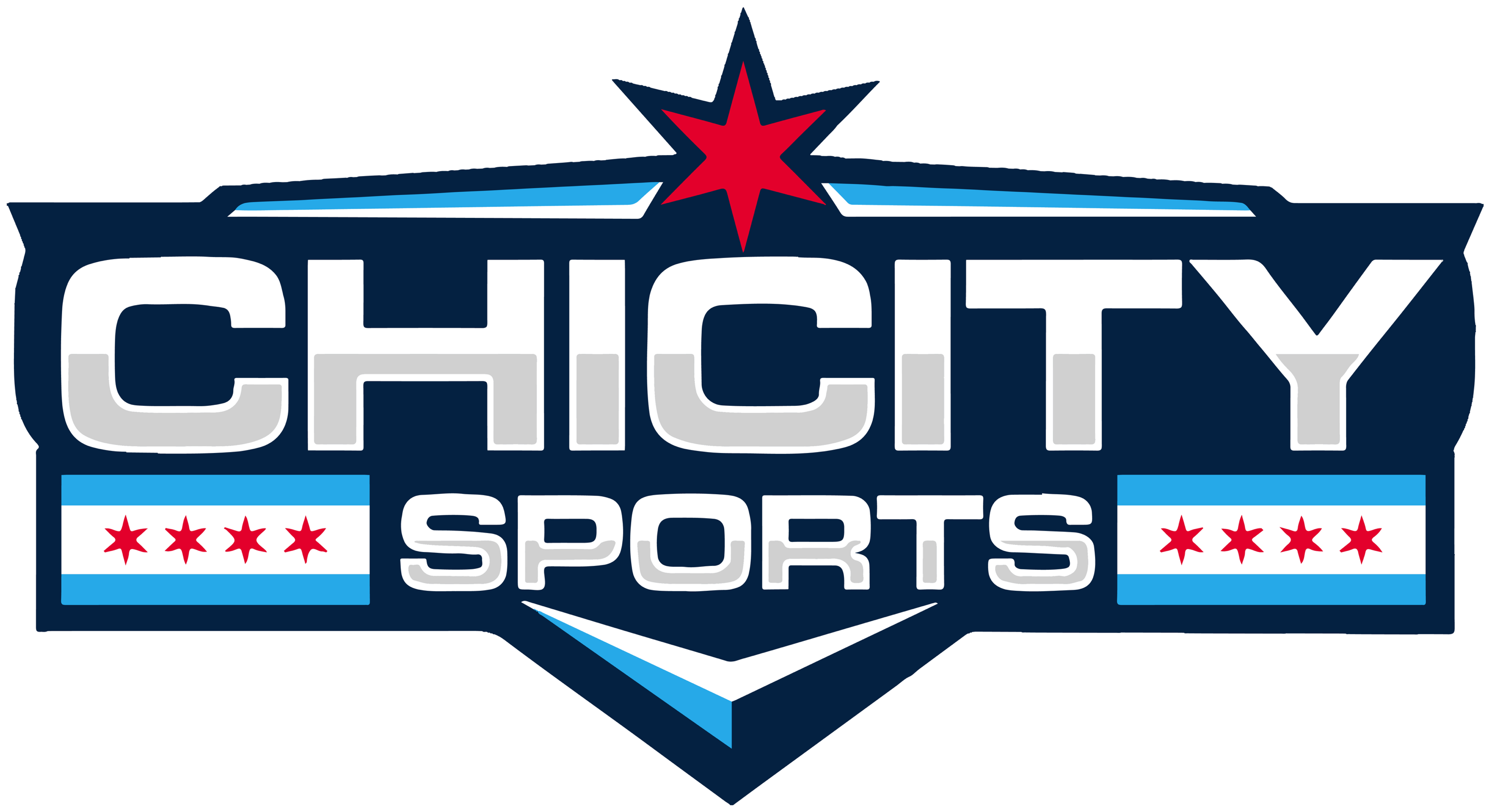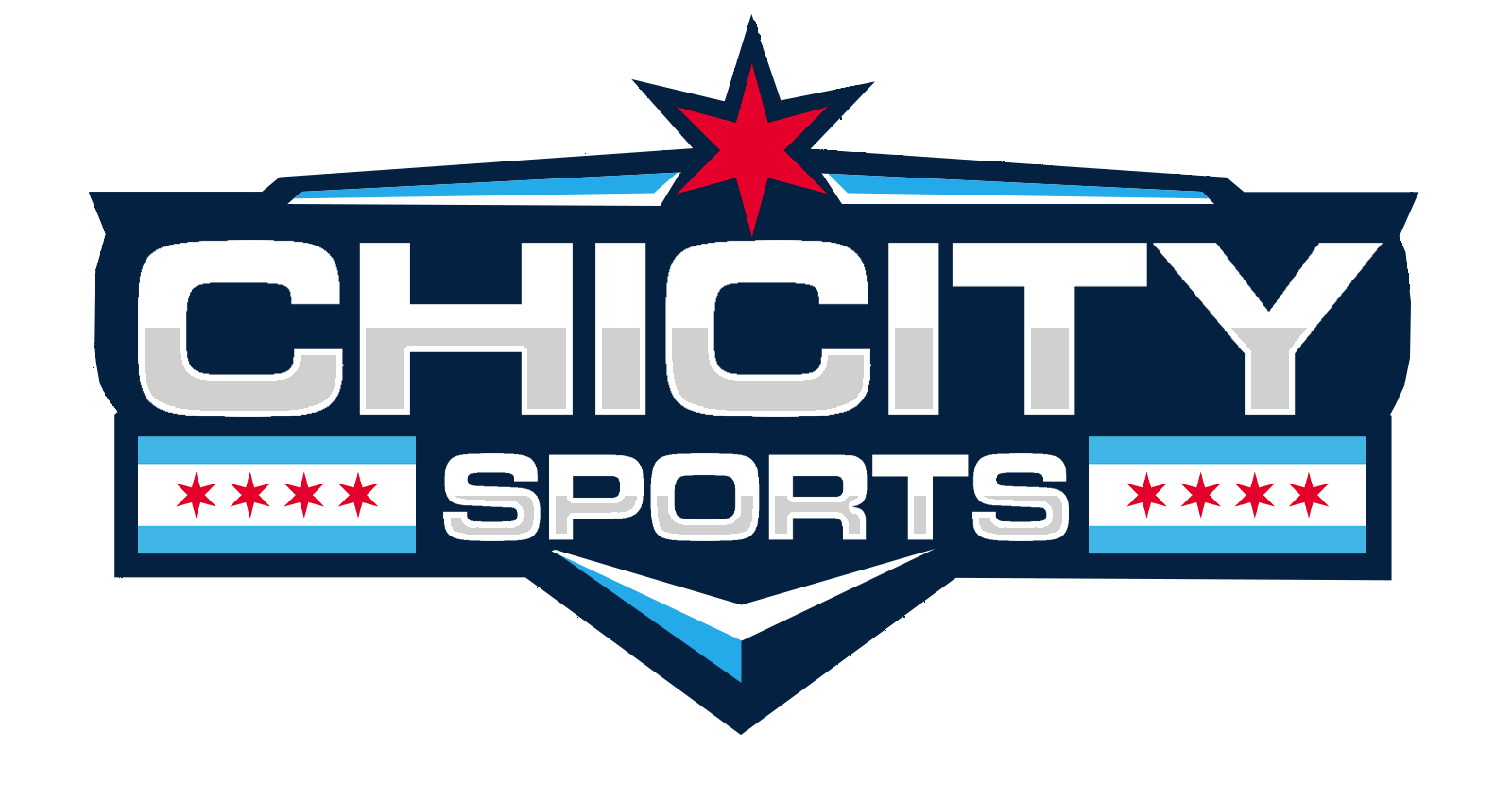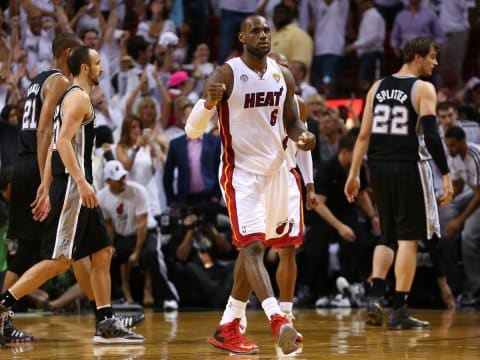Here’s Parts 1, 2 and 3 of this series
Finally my first annual Chicago Bulls player value rankings have come to an end. For those of you that missed out on Parts 1, 2 and 3, the idea behind this series was influenced by the brilliance of Bill Simmons’s NBA Trade Value rankings. Instead of ranking the NBA’s top 50 players, I’ve decided to compile the Bulls top assets. In Part 4 of this series I analyze the faces of the Bulls franchise: Jimmy Butler, Joakim Noah and Derrick Rose.
THE RUNDOWN:
13.) Malcolm Thomas
12.) Richard Hamilton
11.) Kirk Hinrich
10.) Marquis Teague
9.) 2013 No. 20 pick
8.) Carlos Boozer
7.) Luol Deng
6.) Taj Gibson
5.) Nikola Mirotic
4.) Protected Charlotte Pick
3.) Jimmy Butler
2.) Joakim Noah
1.) Derrick Rose
GROUP B: “Would only be traded for a superstar”
3.) Jimmy Butler
Let’s put it this way, if I did these rankings a year ago, Butler would’ve been near the bottom of the list after having a promising but very limited rookie season. One year later and he’s a franchise cornerstone.
The same guy that played less than ten minutes in three games during the first month of the season played 48 minutes in five of the Bulls 12 playoff games. Yes you read that right. Butler became the fourth player since the ABA-NBA merger (1976) to play 48 minutes in three straight playoff games according to ESPN Stats and Info. Tom Thibodeau couldn’t get himself to put the 23-year old sophomore on the bench. You can’t blame him with the way Butler played toward the end of the season.
Butler averaged 10.9 points, 4.8 rebounds, 2.2 assists and 1.4 steals per game while shooting 44.9 percent from the field and 47.5 percent from beyond the arc post All-Star break. As a starter he was even better, averaging 14.5 PPG and 7.1 RPG in 20 games. Butler’s PER jumped from 12.48 as a rookie to 15.26 during his second season thanks to an efficient offensive approach.
Butler ranked 39th in the league in points per play according to Synergy. Butler was especially impressive in the post, ranking 45th in the league in points per play in post-up situations. Although he only shot 39.5 percent in the post, he drew a shooting foul in 18.1 percent of his post-ups. Butler’s 0.46 FTA/FGA ranked third in the league among wing players according to hoopdata.com (min. of 40+ games played and 20+ MPG). Butler is an outstanding finisher in the paint as his 68.2 field goal percentage at the rim ranked 10th in the league among small forwards. Besides his attacking skills, Butler raised his 3-point percentage from 18.2 percent as a rookie to 38.1 percent this past season. He also shot 40.5 percent from downtown in the playoffs while making 1.3 per game, proving his shot might improve even more in the future. Butler’s greatest asset is his dogging defense despite his budding offensive skills
This season Butler has emerged as one of the top 10-15 best perimeter defenders in the league. Butler ranked 29th in the NBA in points per play defended as his opponents shot only 36.8 percent from the floor. Butler ranked in the top 100 in all of Synergy’s play types (iso, P and R, post-up, spot-up, off screen and hand off). If you’re an anti-Synergy guy, Butlers opponents PER of 10.7 ranked second in the NBA according to 82games.com. Essentially whoever Butler guarded turned into Richard Hamilton. Butler opponent’s PER at shooting guard was even more outstanding at a mere 7.0. When defending at small forward that number went up to 12.7, so perhaps Chicago should consider switching Butler onto shooting guards whenever possible. Butler also struggled defending the post, where he ranked 97th in the league in points per play, suggesting small forwards tend to outmuscle him. Whether at shooting guard or small forward, Butler is already an All-Defense caliber player. Just look at what he did against the Heat.
Butler had to guard either Dwyane Wade or LeBron James the entire game while doing his best Ironman impersonation during the second round of the playoffs. Wade had an atrocious series, averaging only 12.6 PPG. James also underperformed as he averaged only 23.6 PPG while shooting 43.8 percent from the floor against the Bulls (vs. the Bucks and Pacers LeBron averaged 27.4 PPG while shooting 54.5 percent from the field). Even outside of his suffocating defense Butler led the Bulls in scoring during the series at 15.6 PPG. In Game 1, which was the Bulls only win in the series, Butler was especially monstrous, scoring 21 points and grabbing 14 rebounds.
Who knew the Bulls 30th pick in the 2011 draft would already become their third best asset just a couple years later. Even Bill Simmons put Butler at 49th in the league in his trade value rankings. Butler’s become so good, so fast that Luol Deng has suddenly become expendable. I can’t wait to see this guy play alongside Derrick Rose next season.
2.) Joakim Noah
Noah is safely the Bulls second best asset even with the emergence of Butler. Although he’s undoubtedly valuable to the Bulls, it would nice to see him healthy in the postseason.
After having a career year, Noah had to play through the tail end of the season with plantar fasciitis. This comes a year after Noah injured his left ankle against the 76ers and missed the last three games of the series. Prior to that injury in Philadelphia Noah was averaging 15.0 points, 9.3 rebounds, 3.0 assists and 1.4 blocks per game while shooting 73.1 percent from the floor (as well as a 28.7 PER). Not surprisingly the Bulls lost two of the final three games in the series. Fortunately for Chicago, Noah was at least able to play this postseason despite the tear in his plantar fascia. Well, he was barely able to play that is.
In the Game 1 blowout loss to the Nets, Noah was limited to only 13 minutes, totaling four points and five rebounds. His next two games weren’t much better as he combined for 12 points on 4-of-15 shooting from the field in Games 2 and 3. With Luol Deng and Kirk Hinrich sitting out the final three games of the series, Noah had to step up come Game 7, even if he was still hobbling up-and-down the floor. And man did he ever.
Noah began the game with a crazy motor even for his standards–he basically looked like a mad man–. His manic effort couldn’t help but inspire the rest of the team to come out with the same intensity. Noah flat out dominated both ends of the floor, finishing with 24 points, 14 rebounds and 6 blocks while shooting 12-of-17 from the floor in a 99-93 Game 7 victory. Noah became one of two players since 1986 to put up that stat line in a Game 7 (Shaq in 2004). Noah ended up struggling in the five-game series loss to the Heat, but his injury was clearly taking a toll on him. He just wasn’t the same player. If anything his below-average play the rest of the postseason made his performance in Game 7 that much more special. That game was without a doubt the highlight of Noah’s season, but it didn’t come close to being his only highlight.
Noah would’ve had a great chance to win the Defensive Player of the Year if he didn’t miss 16 games (although he did still make the All-Defensive 1st team). Noah did it all defensively, finishing eighth in the league in rebounds per game (11.1), sixth in blocks per game (2.14), third in steals per game among centers (1.18) and 71st overall in points per play allowed according to Synergy. Chicago also allowed five points less per 100 possessions with Noah on the floor according to NBA.com. Noah’s best defensive showing was against the 76ers on Feb. 28 when he had 23 points, 21 rebounds, 11 blocks and three steals. Only one player has put up those numbers in the past 27 seasons and he’s a Hall of Famer (Hakeem Olajuwon in 1989).
Noah’s bread and butter is his help defense. To put his help defense in a statistical form, Boozer’s defense rating (points allowed per 100 possessions with him on the floor) was 102.0, ranking 10th on the team. When Boozer played alongside Noah, his net rating improved to 100.2 (Noah and Boozer played 1,641 minutes with each other this season, ranking third on the team).
Aside from his All-World defense, Noah turned into the best playmaking big man in the league this season. Noah and Marc Gasol led all NBA centers and power forwards in assists per game at 4.0 (min. of 50 GP). That number came along with a sky-high turnover rate of 15.0, ranking in the bottom 15 among centers, but Noah’s passing skills were crucial to a Bulls offense withour Rose. Noah also contributed to Chicago’s offense with the 16th best offensive rebound rate in the league. Noah provided little offensively outside of passing and rebounding as he ranked 309th in the league in points per play. However his defense, playmaking and energy, otherwise known as his heart, hustle and muscle, more than made up for his offensive shortcomings.
Heading into this season Noah was highly valued by the Bulls, but was underrated by the rest of the league. Simmons didn’t even have Noah in his 2012 Trade Value rankings. In his latest edition Noah has moved all the way up to 17th (just ahead of Kevin Love, Chris Bosh and Dwight Howard). If Noah could stay healthy for an entire season (which is a big if considering he’s missed an average of 16.5 games the past four years) than maybe we’ll see him jump into the top 15 assets in the league a year from now.
Even though this series is about trade value, Noah isn’t going anywhere.
GROUP A: “Would only be traded for LeBron, but essentially untouchable”
1.) Derrick Rose
There’s no surprise here. Derrick Rose is everything to Chicago. Without him the Bulls lost four out of five against an eighth-seeded Sixers squad in 2012 and won only 45 games in the regular season after leading the league in wins the past two years. Before I jump into the “will Derrick Rose ever be the same” debate, I want to quickly address the “should Rose have played in this postseason” debacle.
Throughout the postseason I was a supporter of Rose playing. I know this thinking isn’t popular among Rose enthusiasts, but the Bulls could’ve done something special this postseason if their MVP was in the lineup. Just look how vulnerable the Heat have looked against the Pacers and Spurs. Insert Rose into the Bulls lineup and you never know what would’ve happened. My biggest problem with the Rose situation is that he should’ve said he wasn’t going to play a couple weeks before the regular season ended instead of keeping Chicago waiting. It didn’t help watching Rose throw down pre-game dunks after being medically cleared for months. This whole situation could’ve been avoided if the Bulls ruled Rose out instead of listing him as day-to-day for the entire postseason. Rose will be 25-years old heading into next season, so he has his whole career ahead of him, but I have a feeling this postseason will be talked about for much longer.
Now that I got that off my chest it’s time to assess how long it will take for Rose to be in MVP form again. Fortunately (or unfortunately) we have two other young point guards to compare Rose to that also suffered torn ACLs during the 2011-12 season: Ricky Rubio and Iman Shumpert.
Rubio might not be the most ideal comparison to Rose since he’s much more of a passer than scorer, but the 22-year old Spaniard is surprisingly athletic. So much so that ESPN’s Bradford Doolittle calculated Rubio as the 32nd most athletic player in the league. Foul drawing, rebounds, steals and blocks are all great indicators for athleticism and Rubio excels in those areas. Rubio needed a couple months to gain his athleticism back upon returning in mid-December, but once he shook off the rust he was even better than his pre-ACL self.
Pre All-Star break (25 games): 7.8 PPG, 6.5 APG, 2.5 RPG, 1.8 SPG and 34.3 FG% (26.4 MPG)
Post All-Star break (32 games): 12.9 PPG, 8.0 APG, 5.2 RPG, 2.9 SPG and 36.8 FG% (32.3 MPG)
Rubio got out of the gate slow, averaging only 4.2 PPG in December and 5.4 PPG in January while shooting below 30 percent from the field in both months (albeit he only played in 17 combined games). Rubio improved his PPG the next two months to 12.8 PPG and 14.1 PPG, respectively. Post All-Star break his athletic numbers were off the charts as he averaged 5.2 RPG (2nd in the league among PGs post ASB), 2.9 SPG (1st in the NBA post ASB) and attempted 5.1 FTA per game (seventh among PGs post ASB). Rubio’s PER for the 2012-13 season actually improved from his rookie year (14.64 to 16.20). Shumpert also saw a massive improvement in his game as the season progressed.
Pre All-Star break (13 games): 5.3 PPG, 3.4 RPG, 0.7 SPG, 58.3 FT% and 33.8 FG% (19.2 MPG)
Post All-Star break (32 games): 7.4 PPG, 2.9 RPG, 1.1 SPG, 82.9 FT% and 41.8 FG% (23.3 MPG)
Even though Shumpert tore his ACL on the same day as Rose (Apr. 28), he returned on Jan. 17 while Bulls fans are still waiting for The Return. After struggling from the start, Shumpert finally starting looking like himself again toward the end of the season. Interestingly enough, Shumpert improved his 3-point shooting dramatically from his rookie season despite the recovery period (30.6 percent to 40.2 percent). That stroke continued into the postseason where he made 1.5 3-pointers per game at a 42.9 percent clip. He also upped his rebounding to 6.0 per game in the postseason. Oh yeah, and he almost broke the rim with this put-back dunk against the Pacers, proving he hasn’t lost any athleticism from the ACL tear. One alarming statistic was Shumpert’s sizeable drop-off in his field-goal percentage at the rim, which fell from 61.6 as a rookie to 48.7 this past season. This statistic is especially important to Rose who constantly attacks the basket.
Rubio and Shumperts’ progression throughout the season bodes well for Rose. He might not be the same Rose until around December or even later, but by the 2014 postseason Rose should be more than ready. So when Rose begins the season with underwhelming numbers, stay calm, it’s going to be a process.
Naturally Rose’s absence dropped him six spots to No. 9 in Simmons’s 2013 rankings. It’s hard to argue with the guys in front of him (CP3, Kyrie Irving, Melo, Harden, Westbrook, Steph Curry, Durant and LeBron). Even though Rubio and Shumpert have faired well post-ACL tears, everyone’s body is different. There is a chance Rose may never have a better year than 2010-11, although I wouldn’t bet on it.
Even if Rose returns to form, can he be the best player on a championship team? Hopefully next year he’ll have a chance to answer that question.
For More Great Chicago Sports Content
Get the latest Chicago sports news, analysis, and breaking stories on the Bears, Bulls, Blackhawks, Cubs, White Sox, Sky, and more! Tap the star to add us to your favorites on Google News, so you never miss a story on your favorite Chicago teams.
Follow us on Twitter at @chicitysports23 for more great content. We appreciate you taking time to read our articles. To interact more with our community and keep up to date on the latest in Chicago sports news, JOIN OUR FREE FACEBOOK GROUP by CLICKING HERE



